Leafy greens are typically rich with a heap of nutrients. They usually contain various vitamins, minerals, fiber, and antioxidants. More times than not, leafy greens contain little or no fat – and when they do have some fat, it is the healthy kind.
While we’ve established that leaves can be very nutritious, not all leaves are edible. Some plants have leaves with toxic compounds to deter predators. If you eat these leaves, you will almost surely not have a good time. In mild cases, you may have diarrhea, stomachache, or nausea. Or things could be more severe and even possibly fatal.
To ensure you can find safe and edible leaves to eat wherever you find yourself in the world, we compiled a list of 23 types of edible leaves.

Table of Contents
1. Bathua
Bathua leaves go by many different names in different regions. In some places, people call them lamb’s quarters, goosefoot, melde, or pigweed.
Bathua is not widely cultivated around the world. So, you are more likely to find it in Northern India than anywhere else. More precisely, you’ll find it in Himachal and Rajasthan regions.
Bathua is a seasonal green, so you can only find it in the winter months. Bathua leaves are highly nutritious as they contain iron, potassium, vitamin A, vitamin C, B vitamins, phosphorus, and calcium. They also have high water content and a lot of fiber. So, they might just improve your digestive health.
Bathua leaves are also decent sources of amino acids. So, if you ever wanted a green amino acid/protein supplement, they might come in handy.
Bathua leaves are somewhat like spinach. In fact, you can cook them like spinach. Bathua leaves are typically prepared alongside other vegetables, then eaten with flatbread.
2. Bay Leaves
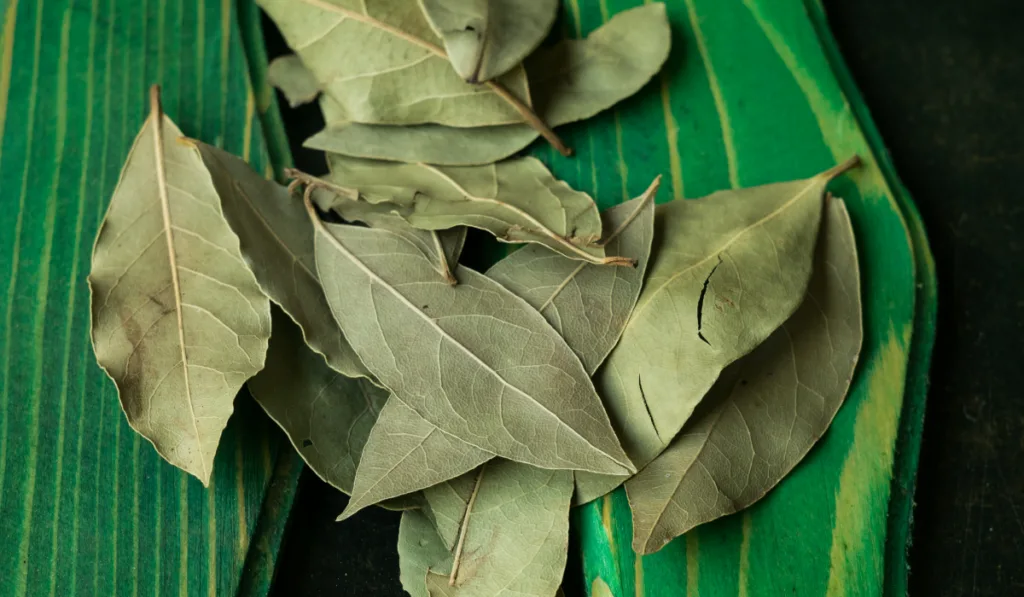
Contrary to what you may have heard, bay leaves are actually edible. But then, they have a tough, chewy texture. So, while they are safe for human consumption, they are almost impossible to eat.
While you will find it almost impossible to chew and swallow bay leaves, you can add them to soups, stews, and similar dishes as flavor. The aroma they will add to your meal is somewhat magical.
They might be safe for consumption, but bay leaves are a potential choking hazard if swallowed. Also, there is a chance they could get stuck somewhere in your digestive system. So, after allowing bay leaves to simmer in your dish, you should get them out.
3. Beet Greens
Beet greens refer to the green leaves of the beetroot plant. But this reference sometimes includes the scarlet stems of the plant.
Like beetroots, beet greens are edible and delicious. Their flavor is similar to that of Swiss chard, but they are sweeter. You could describe their flavor profile as mild, earthy, and sweet.
Besides being a delicacy, beet greens are chock-full of nutrients. They are a great source of vitamins A, B1, B2, B6, C, E, and K. They also contain iron, copper, potassium, manganese, and calcium. Thanks to these nutrients, beet greens promote vision, immunity, skin health, bone and teeth health, and cellular metabolism.
You can sauté beet greens or toss them with pasta. You may also add them to egg recipes or cook them like kale.
4. Betel Leaves
Betel leaves are popular in South East Asian cuisine. They are totally edible, and they find various culinary uses.
In Southeast Asia, people commonly eat raw betel leaves. They use them as wrapping for other edible food items like prawns, tofu, and shredded duck. In some cases, people use betel leaves to line platters, making them a form of a spoon.
Besides their culinary value, betel leaves are medicinal. They may help improve appetite, oral health, and digestive health. Betel leaves can also help with pain relief and acne treatment.
5. Cabbage
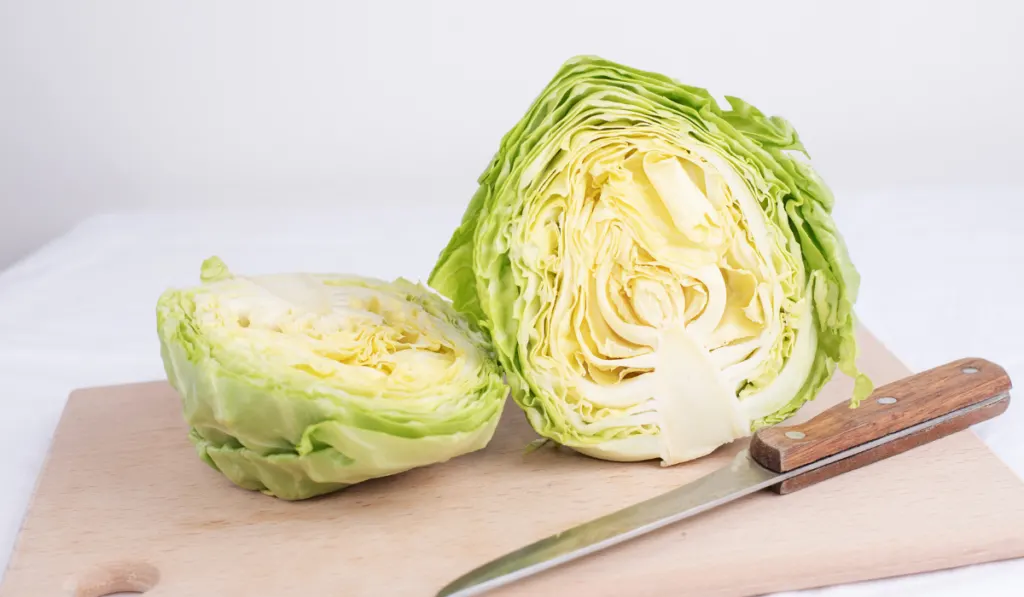
This one needs no introduction. Cabbage is one of the most popular leafy vegetables. Its outer leaves are well-known for their use in making coleslaw and salad.
Besides salads and coleslaws, you can use cabbage leaves in rolls, stir-fries, and sandwiches. You can also use them as an alternative to lettuce in some recipes.
Cabbage leaves have a mild, sweet taste, and you can enjoy them raw. They are pretty nutritious too. In fact, cabbage leaves contain more vitamin C than oranges. They also contain antioxidants and dietary fiber.
6. Cauliflower
Cauliflower leaves are another popular edible leafy green. Thanks to their mild flavor, they are pretty agreeable to most people. So, if you are averse to eating vegetables with intense flavor, you just might like this one.
Cauliflower leaves generally have a mild taste. However, the taste and texture may also depend on which part the leaf comes from.
Cauliflower leaves closer to the core of the floret are more fibrous. But when cooked, the texture of the leaves becomes like that of a leek. The leaves might be slightly bitter, but they still retain the general cauliflower taste. If you do not want that bitterness, you can add spices and seasonings to improve the taste.
When eating cauliflower leaves, ensure you avoid those that may have absorbed pesticides.
7. Celery
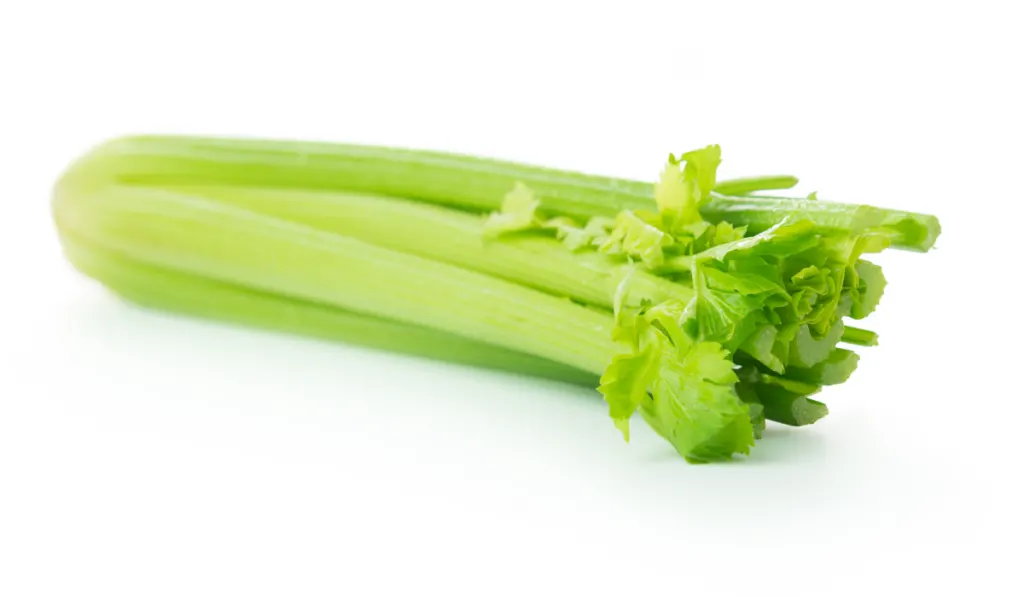
Celery leaves are edible and highly nutritious. Studies even show they can help improve cardiovascular health while helping the body improve its lipid profile.
The outer and inner leaves of celery have different textures and flavor profiles. So, they do not always fit into the same types of dishes.
The outer leaves are fibrous but intensely flavored. So, if you want a lot of flavor in a meal where texture is not a big deal, use them.
The inner leaves are tender and delicate. They also pack a lot of flavor, and you can eat them raw. You can also use them in any dish that calls for celery.
8. Cilantro Leaves
All parts of the cilantro plant are edible: The leaves, stems, and seeds. Cilantro leaves are pretty tasty. But beyond being tasteful, they are flavorful – they have a somewhat citrus-like flavor.
In the United States, cilantro leaves are typically used as a garnish in spicy soups and salsas. You can also use them to make tea and sauce, or you could use them as a spice in various dishes.
9. Collard Greens
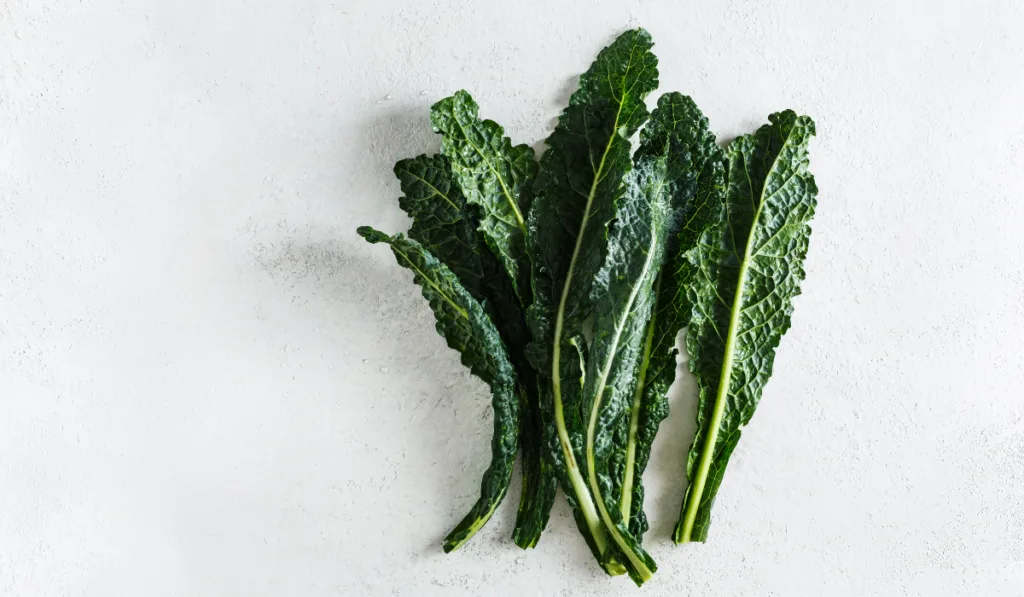
Collard greens – the leafy parts of collards – are edible. They share a close relationship with kale, cabbage, and mustard greens. Unsurprisingly, you can cook them similarly.
You can eat raw collard greens. However, they are bitter, but not as bitter as kale. When you cook collard greens, the bitterness reduces, and a subtle earthiness replaces it.
You can cook collard greens in braises and soups. You may also use them in various dishes alongside vinegar, onions, salt, and pepper. You may add them to salads or cook them with salted or smoked meat.
While collard greens are available all year, you’ll get those with the best flavor in the cooler months.
10. Curry Leaves
Raw curry leaves are bland yet flavorful. So, if you want to enjoy them, you should cook something with them or add them to your meal.
When cooked, the flavor of curry leaves can be a gamechanger. Thankfully, they are compatible with many meals, and you can grind the leaves if you want.
Besides being flavorful, curry leaves are highly nutritious.
11. Dill Leaves
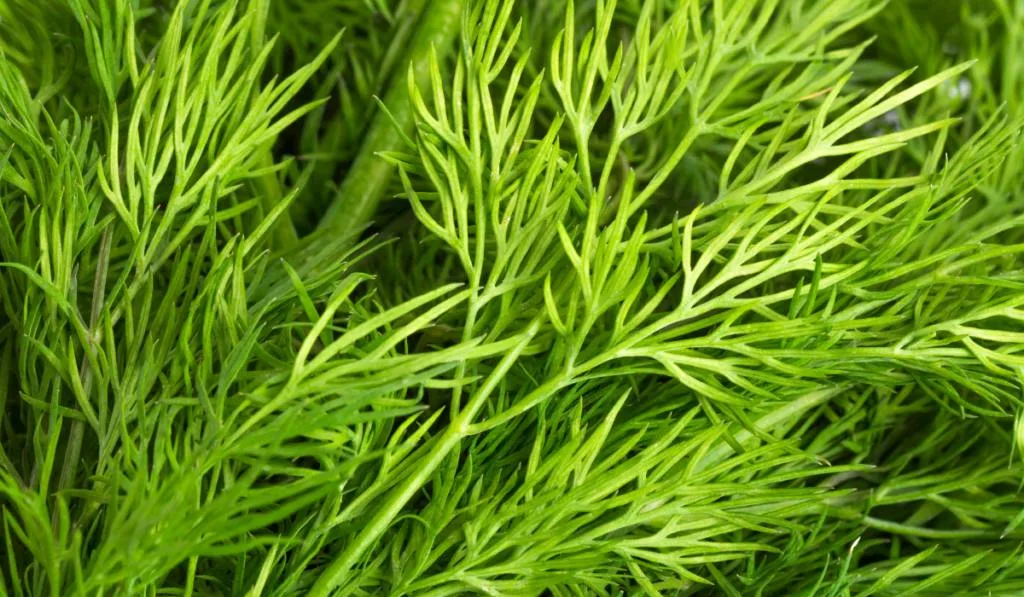
All parts of a dill plant, including the leaves, are edible. Dill leaves add an aromatic flavor and a citrusy taste to your dishes. However, if you cook them for too long, you may lose some flavor and taste.
Dill leaves are commonly used in Mediterranean and Southwest Asian cuisines. You can add them to various vegetable recipes.
You can use dill leaves in salads, pickled vegetables, egg dishes, creamy dressings, and fish dishes. You may also use them for soups, sauces, and potato dishes.
12. Fennel
Fennel leaves are tasty and flavorful. They add texture and flavor to salads, pasta dishes, stocks, salsas, and curries. You can top your eggs, toast, yogurt dips, and stir-fries with them.
Besides their many culinary uses, fennel leaves are beneficial to your health. They contain various nutrients that improve digestive, skin, and cardiovascular health.
13. Fenugreek
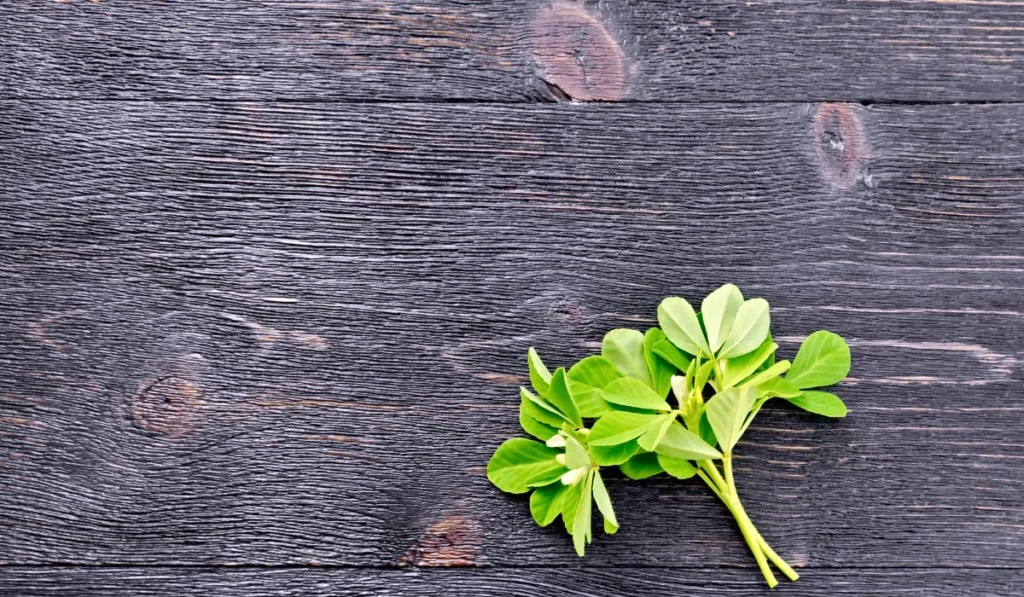
Whether fresh or dry, you can eat fenugreek leaves. You can add them to soups, curries, vegetable dishes, and sauces.
When dry, you can use fenugreek leaves to season barbecued fish marinade, yogurt, and cream.
14. Garden Cress
Garden cress shares a relationship with watercress, mustard, and pepperwort grass. Its leaves are edible, and you can even eat them raw.
Garden cress leaves have a tangy, peppery flavor. You can use them in salads, soups, sauces, and sandwiches. You may also use them to flavor vinegar.
15. Iron Cross
You can eat iron cross leaves cooked or uncooked. The leaves are tender with a tasty, lemony flavor, and as they grow older, their fiber content becomes lower.
You can use iron cross leaves in soups and salads. However, never overuse these leaves in cooking. Iron cross leaves contain oxalic acid. In minor quantities, oxalic acid is not an issue. But when you consume too many iron cross leaves, oxalic acid may deplete your body’s calcium levels.
Cooking iron cross leaves reduces the amount of oxalic acid in them. However, you should still consume them moderately.
16. Kale

Kale is another leafy green that needs no introduction. Kale leaves have an intense, earthy taste with a tough, crunchy texture. Although, when they are younger, they are tender and mildly flavored.
You can eat kale raw or cook it. In raw form, you can make kale into a smoothie alongside your desired fruit. You may also make a salad.
You may fry kale to make kale chips. You could also sauté it alongside vegetables. You can even add it to stir-fries.
17. Lemongrass
Lemongrass leaves are edible and popular in Asian cuisines. They have a sweet, lemony, floral flavor and are typically used for flavoring dishes.
You can use lemongrass leaves fresh, dried, or powdered. You can use them to make lemongrass tea, rice, chicken, steak, spritzers, curries, and many other foods & drinks.
18. Lettuce

Lettuce is pretty well-known. There are different types of lettuce, and each one has a different texture and flavor profile.
Depending on the texture and flavor you want, you can opt for any of them.
You can eat lettuce raw or cook it in various ways. You can add the leaves to sandwiches, hot dog rolls, and burgers. You can use it in soups, stir-fries, and salads. You may also use it for filling with meat and flavored rice.
19. Pumpkin Leaves
Many parts of a pumpkin are edible, including the leaves. Pumpkin leaves taste like a mix of various leafy greens like green beans, spinach, and broccoli. You could say pumpkin leaves have a mild green vegetable flavor.
You can eat pumpkin leaves raw or cooked. The leaves are perfect in soups, sauces, sautés, and stews. You can also make a drink out of them or use them as substitutes for turnip greens and collard greens.
20. Radish Leaves
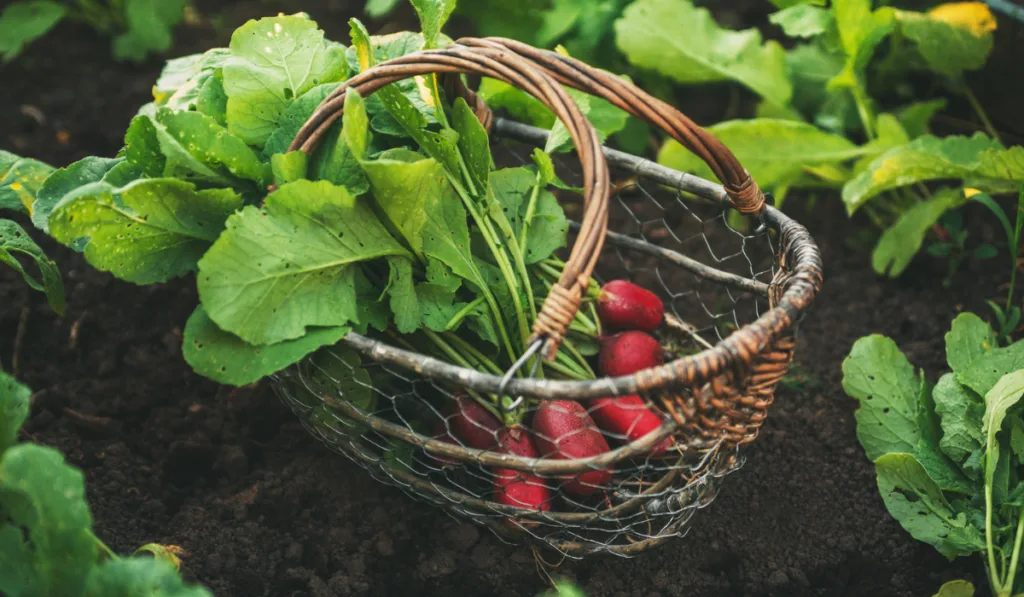
Radish leaves have a mildly earthy taste and a mildly peppery flavor. You can use them raw or cook them. But then, because they have a coarse texture, they do not fit into salads. If you want to add radish leaves to salads, opt for the young, small leaves.
You can use radish leaves in preparing pesto, sautés, frittatas, stews, soups, casseroles, curries, and salads.
21. Red Amaranth
Red amaranth also goes by Chinese spinach. Like spinach, you can eat red amaranth leaves cooked or uncooked.
Red amaranth leaves are crisp and tender. They have a mild, sweet, and earthy flavor. You can use red amaranth leaves in soups, stir-fries, sauces, and salads. One interesting thing about them is that they retain their color even after cooking. So, if you ever wanted something to make your meals colorful, here’s one option.
22. Sesame

Sesame leaves – also perilla leaves – are popular in the traditional Korean diet. They are pretty flavorful; they have a nutty, aromatic flavor that can accentuate many meals.
You can eat sesame leaves when they are raw. Alternatively, you may cook them in stews or use them as wraps for rice and meat.
23. Watercress
All parts of a watercress plant are edible, including the leaves. Watercress leaves are somewhat spicy yet refreshing. When younger, they taste fresh. But as they get older, they may take on a slight bitterness.
You can eat watercress leaves cooked or uncooked. You may use them in smoothies, salads, pesto, stir-fries, dips, sandwiches, soups, and sauces.
Resources
- https://food.ndtv.com/food-drinks/what-is-bathua-make-these-lovely-greens-a-part-of-your-winter-diet-1792286
- https://www.ndtv.com/food/bathua-for-winters-amazing-health-benefits-and-ways-to-include-it-in-your-winter-diet-1954800
- https://www.healthline.com/nutrition/can-you-eat-bay-leaves
- https://pharmeasy.in/blog/20-healthy-leaves-to-eat/
- https://indiagardening.com/lists/plants-with-edible-leaves-that-we-eat/
- https://www.healthline.com/nutrition/can-you-eat-bay-leaves
- https://www.myspicer.com/bay-leaves-dangerous-eat/
- https://whfoods.com/genpage.php?tname=foodspice&dbid=151
- https://cookthestory.com/how-to-cook-beet-greens/
- https://growfoodslowfood.com/2019/05/28/betel-leaf-edible-shade-plant/
- https://letsfoodie.com/faqs/eating/can-you-eat-cauliflower-leaves/
- https://foodprint.org/blog/how-to-use-celery-leaves/
- https://www.allrecipes.com/article/what-are-collard-greens/
- https://spiceitupp.com/what-are-curry-leaves/
- https://www.masterclass.com/articles/learn-how-to-cook-with-dill-plus-11-dill-recipes
- https://www.bonappetit.com/story/dont-throw-out-fennel-fronds
- https://www.cookinglight.com/food/in-season/discovering-fennel
- https://www.foodandwine.com/how/fenugreek-use-tips-chintan-pandya
- https://www.masterclass.com/articles/how-to-cook-with-fenugreek
- https://www.britannica.com/plant/garden-cress
- https://globalfoodbook.com/15-astonishing-benefits-of-garden-cress
- https://pfaf.org/user/plant.aspx?LatinName=Oxalis+deppei
- https://thetastytip.com/what-is-kale-the-taste-color-texture-and-why-you-should-try-it-today
- https://www.thespruceeats.com/what-is-lemongrass-765171
- https://www.tarladalal.com/glossary-lettuce-salad-ke-patte-498i
- https://www.plantfoodathome.com/pumpkin-leaves-edible/
- https://youshouldgrow.com/pumpkin-leaves
- https://www.fromachefskitchen.com/radish-greens-pesto
- https://www.thespruceeats.com/what-are-radish-greens-and-how-are-they-used-5105154
- https://sandiegoseedcompany.com/product/vegetables/amaranth/organic-edible-red-leaf-amaranth-seeds
- https://specialtyproduce.com/produce/Micro_Red_Amaranth_3086.php
- https://ice.edu/blog/perilla-leaves
- https://naturesproduce.com/encyclopedia/sesame-leaves
- https://www.myrecipes.com/how-to/cooking-questions/what-is-watercress
- https://www.watercress.co.uk/blog/2019/2/20/what-part-of-watercress-can-you-eat
- https://www.watercress.co.uk/blog/top-10-ways-to-eat-watercress
